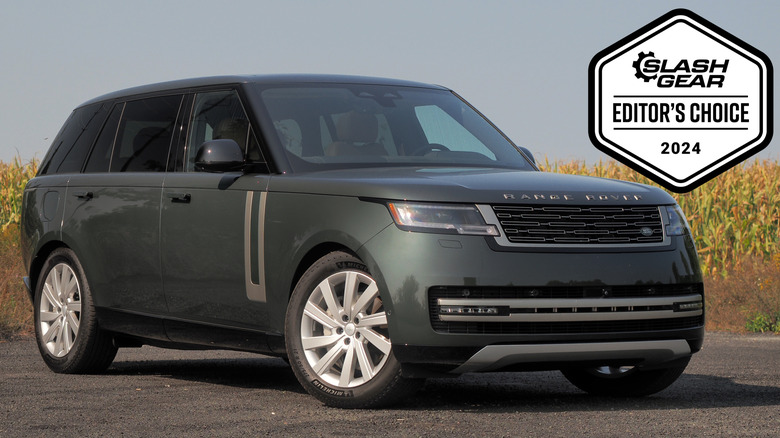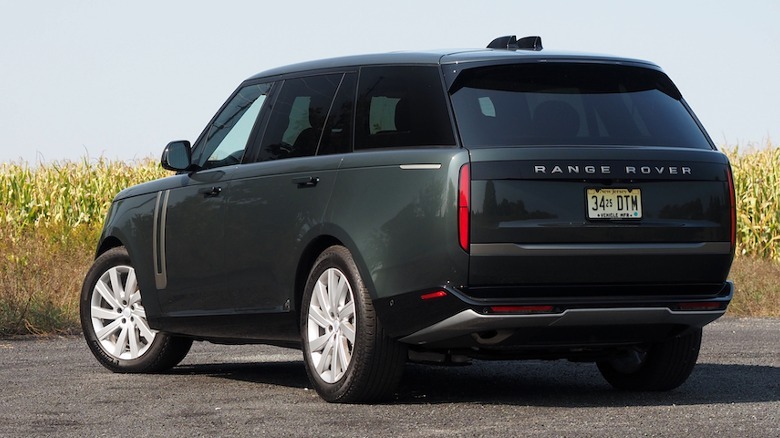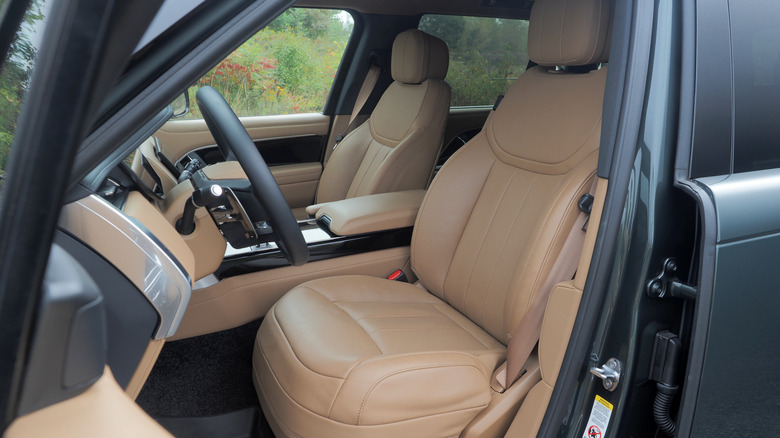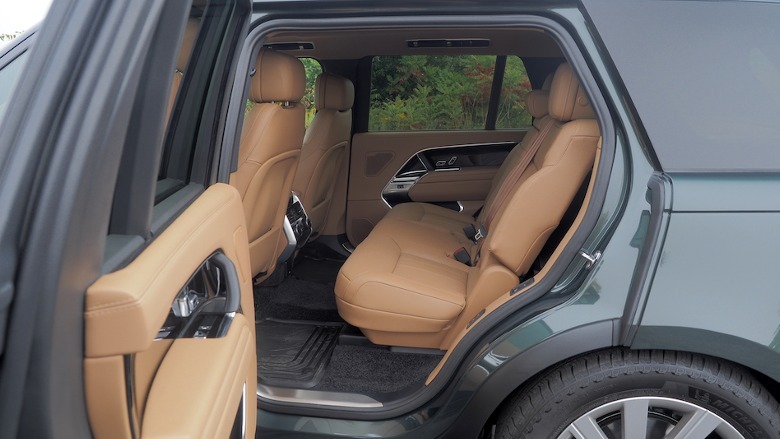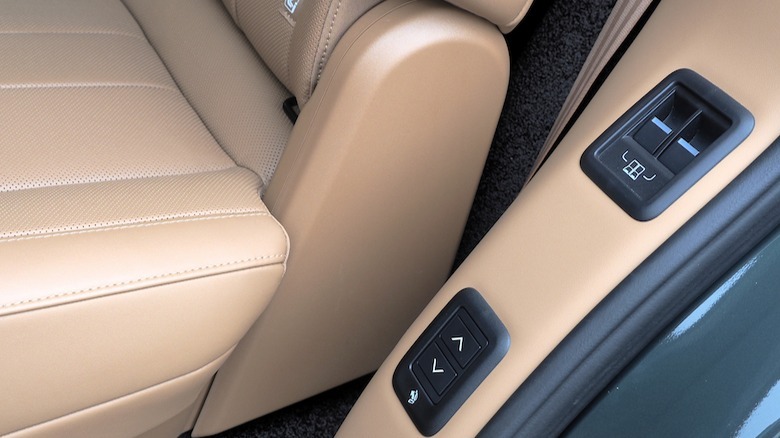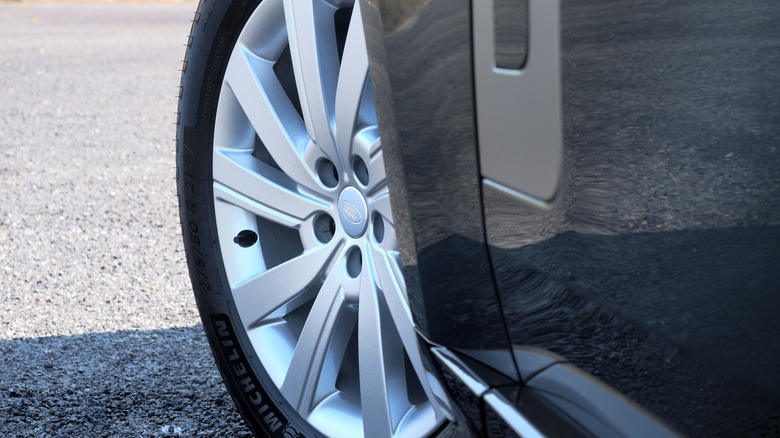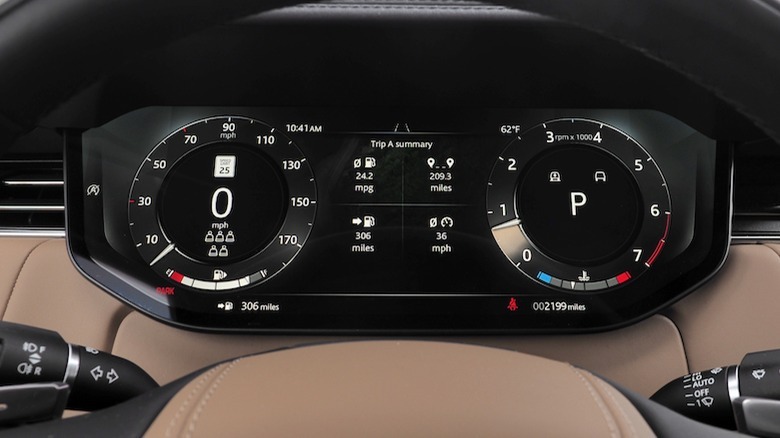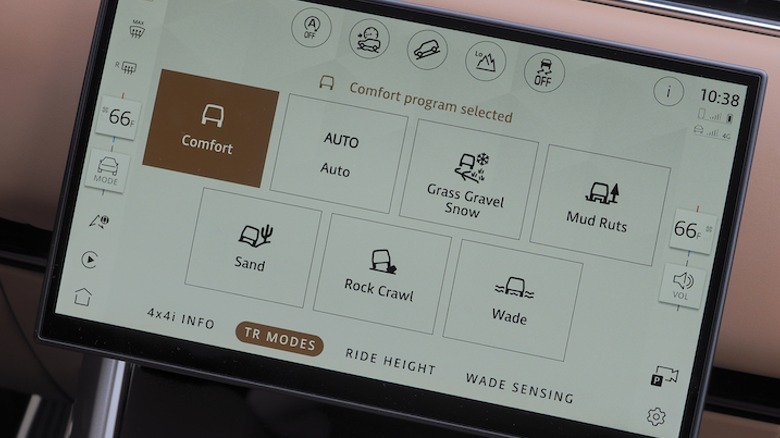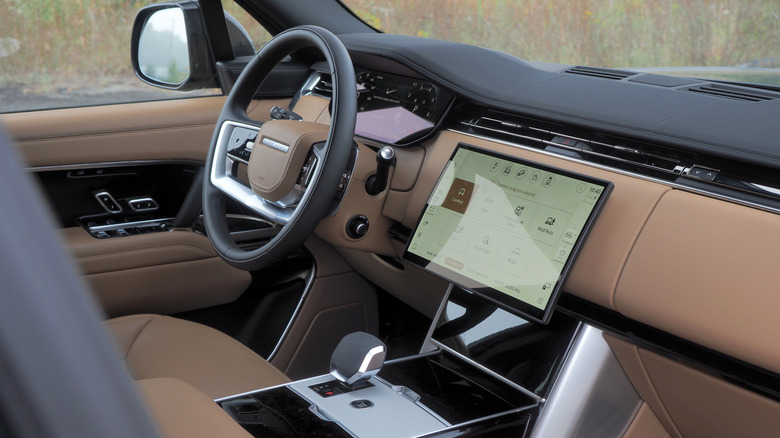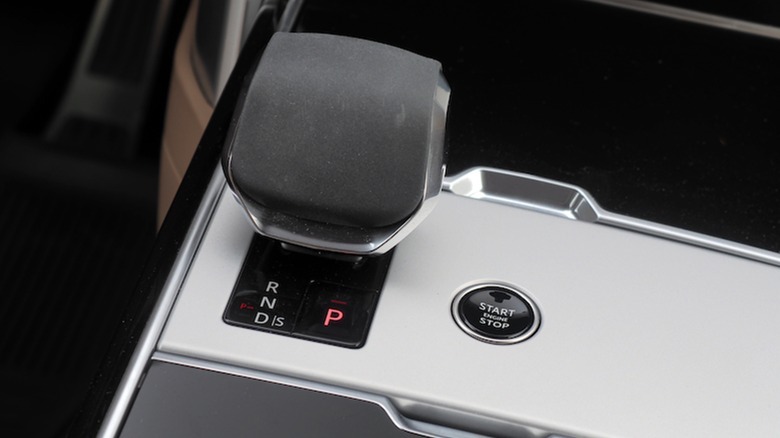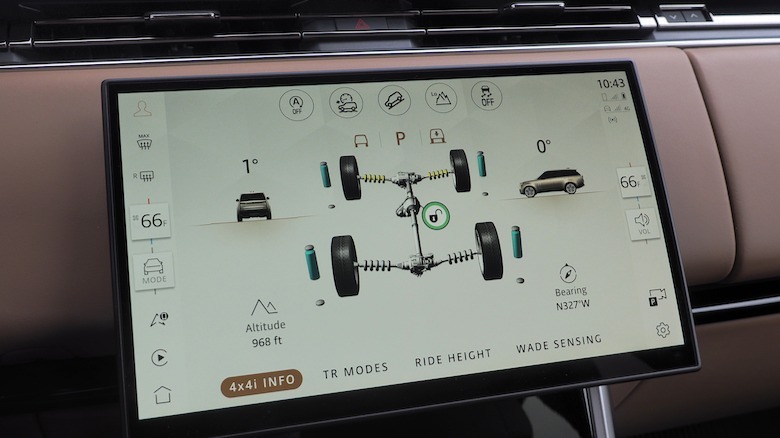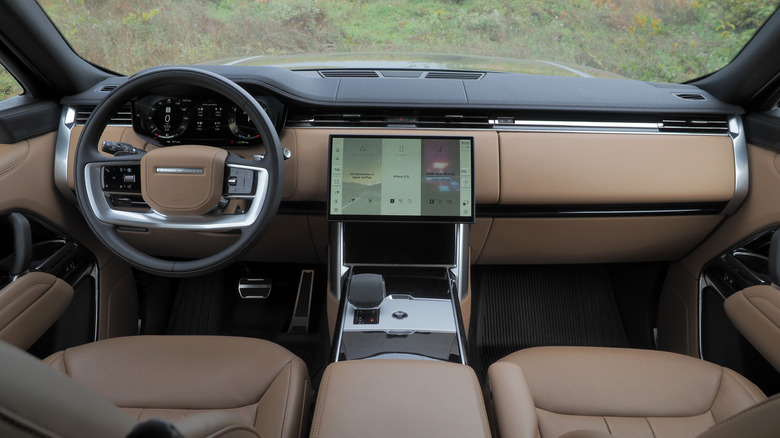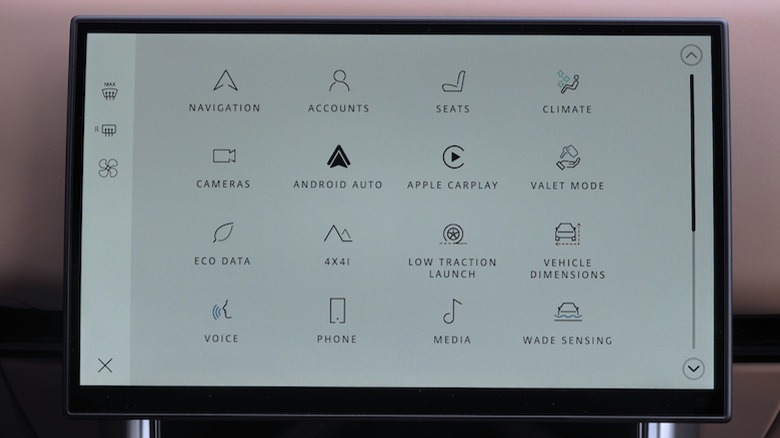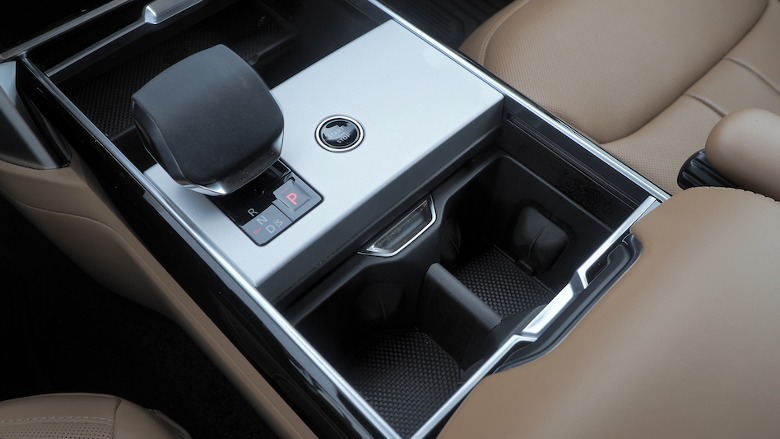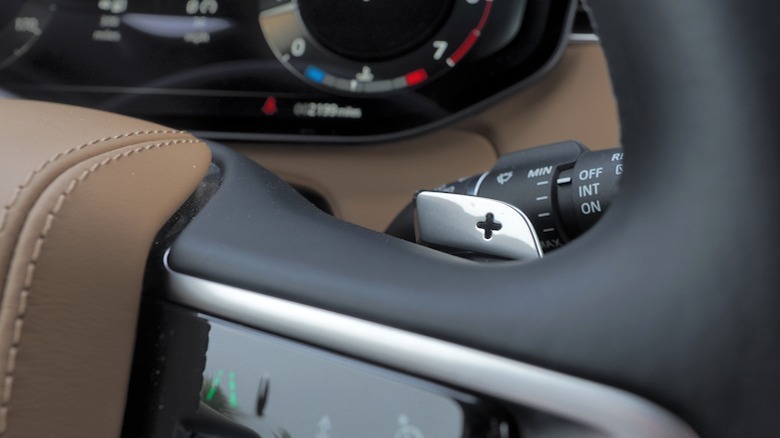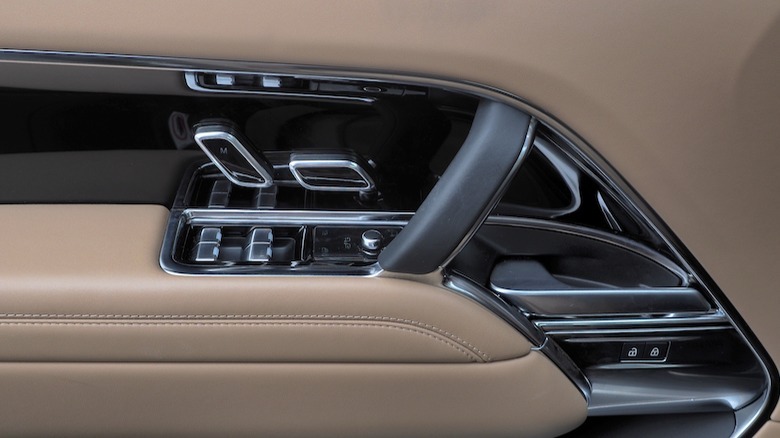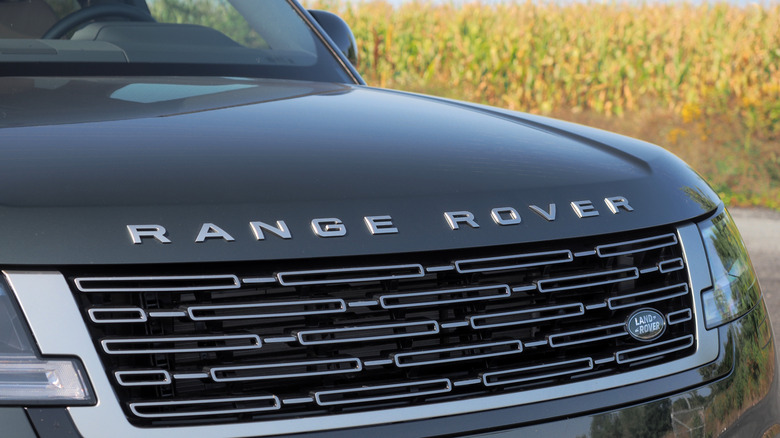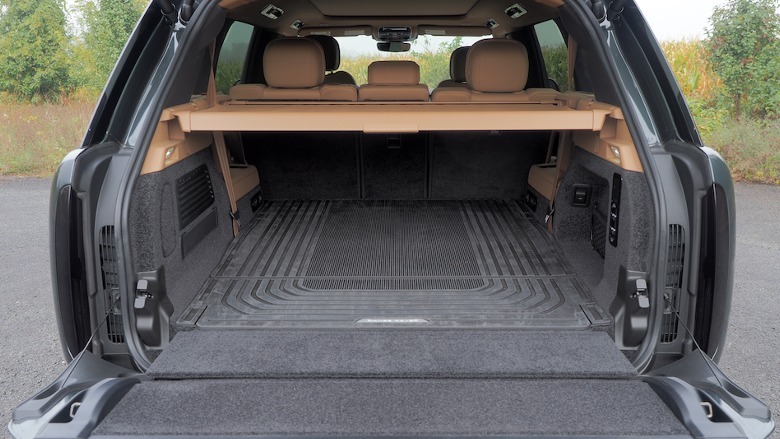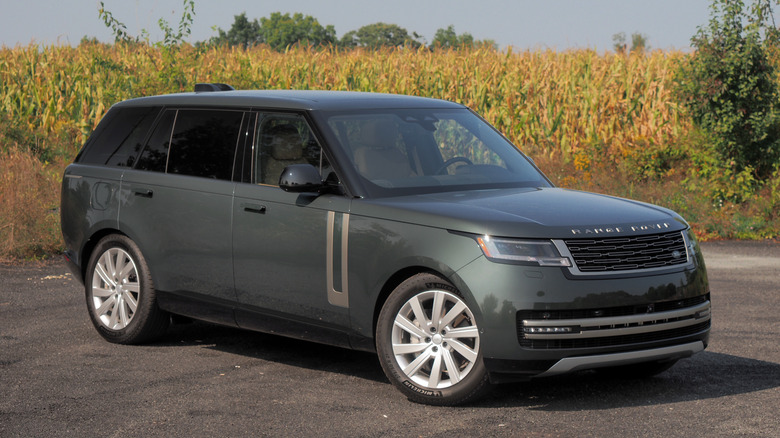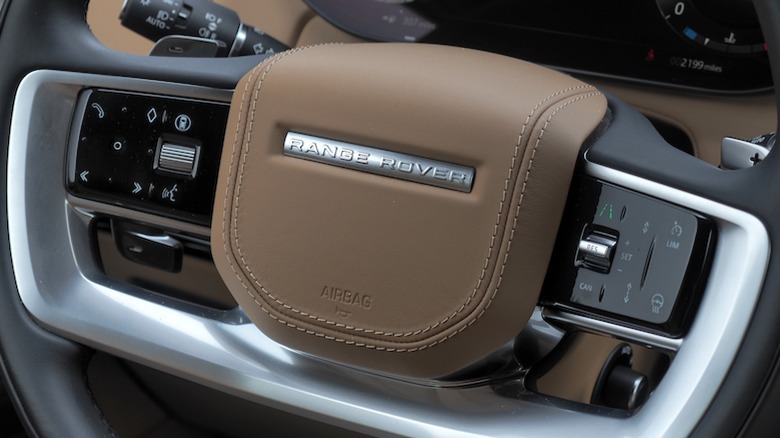2024 Range Rover Review: Expensive, And It Feels It
- Stately style
- Smooth on-road performance
- Genuine off-road abilities
- Spacious cabin has plenty of customization options
- Thirsty engine
- Expensive
- Lingering questions about reliability
Few SUVs walk the walk and talk the talk like the Range Rover. Expensive, grand, and — in recent iterations — genuinely luxurious inside, its six-figure price tag does at least come with the knowledge that it can live up to its off-road aspirations, should your trip take you away from asphalt.
Like a very expensive British pebble gradually smoothed by river water over decades, the Range Rover has progressively lost its sharp edges. The current SUV manages to be both curvaceous without looking pillowy (pay attention, Mercedes EQS SUV); sizable, without straying too far into ostentation. Part of that is down to the designers' relative restraint: there's detailing, but clearly they didn't feel obliged to fill every panel and bumper with needless curlicues, creases, and vents.
Though the front is handsome in a lantern-jawed way, and the profile stately, to my eyes it's the rear where things are most delightful. There's something about the lozenge-like rear lamps and their narrow flanking of the pleasantly-swollen two part tailgate — itself ideal for perching on for impromptu picnics — which epitomizes the big SUV's "modern classic" style language.
Do you want seven seats or four really nice ones?
To that clean style, Range Rover adds a choice of two wheelbases. The standard SUV — from $107,900 plus $1,625 destination — is just shy of 199 inches long overall, with a 118 inch wheelbase. A long wheelbase version adds eight inches to both of those figures.
Big SUVs typically aren't short of cabin configurations, but few push the boat out there quite like Range Rover. Though it may seem incongruous to think of a luxury behemoth like this as a purely people-moving option, the long wheelbase version (from $114,900 plus destination) you see here rivals a minivan with its seven seats total. That's an option above the usual five seats, adding a pair of extra spots behind the second row bench; they're a little tight on headroom, but legroom in this LWB version is fine.
Or, you can go the complete opposite direction, and use all the interior space for maximum lounging. Range Rover's Executive Class Comfort Plus Rear Seats option — available on the SV trim, from $234,000 plus destination — does away with all but four seats total. The pair in the rear are fit for a Gulfstream, massaging recliners separated by a fulsome center console with retractable tables. In long wheelbase form it's positively profligate.
Four engines and a taste of electrification
Until the fully-electric Range Rover arrives, there are four engine choices. Most affordable is the P400, a mild-hybrid pairing electrification with a 3.0-liter six cylinder gas engine for a total of 395 horsepower. It'll do 0-60 mph in 5.3 seconds, the automaker says.
Then there's the P530, another mild hybrid, but relying on a 4.4-liter twin-turbocharged V8 for a total of 523 horsepower. It trims the 0-60 mph time to 4.4 seconds.
Next most powerful — though not most rapid — is the P550e. It's a plug-in hybrid, combining the 3.0-liter gas engine with more potent electrification and a larger battery. It'll do 53 miles of electric only driving, Range Rover claims, albeit on the European WLTP test cycle.
Finally, for those with upwards of $209,000 to spare, there's the P615 mild hybrid. Exclusive to the Range Rover SV, it coaxes 606 horsepower from the 4.4-liter twin-turbo V8. A big number, certainly, though it only slices a tenth of a second from the 0-60 time.
Smooth, fast, and thirsty
With the smallest P400 engine under the hood of this particular review car, you might expect performance to be on the lackadaisical side. Certainly, the big SUV is exceptionally happy to lope along, the eight-speed automatic transmission slushing away with nary a murmur. All-wheel drive, electronically-adjustable air suspension, and all-wheel steering are standard, and though the Range Rover never exactly feels small (and, frankly, I'm not sure you'd want it to), it's easily maneuverable and Comfort mode doesn't so much smooth out bumps as ignore their very existence.
Bury your right foot, though, and the Range Rover dunks its rump like a long-bullied rhinoceros at the end of its patience, and then makes a break for the horizon. 5.3 seconds may not be the fastest time, but it certainly feels plenty quick when you're at the helm of something so vast. The greatest eagerness is unlocked in Dynamic mode with the transmission in Sport; the Range Rover is never going to be a hot hatch, but neither is it sluggish.
Nor will it be cheap to run. The P400 is rated for 18 mpg in the city, 24 mpg on the highway, and 20 mpg combined. That's achievable, based on my own mixed driving, though on the thirsty side. Mercedes' GLS 450 4MATIC and Audi's Q7 Quattro — both with mild hybrid 3.0-liter six-cylinder engines — promise 21 mpg on the combined cycle; the hybrid turbo 3.0-liter inline-six in BMW's X7 xDrive40i bumps that up a point to 22 mpg.
It feels the part inside
Mundane matters like gas prices seem far, far away from inside the Range Rover's hushed cabin, mind. While in three-row configuration it's not quite the SUV at its most lavish, the clean lines of the exterior have clearly been an inspiration.
Range Rover's dependence on the touchscreen means the dashboard can feel a little spartan. Like in the Velar, there are no dedicated climate buttons, no drive mode dial, and no multimedia controls; that's despite there being plenty of real-estate where, say, a physical volume knob could've been accommodated.
Touch-points, for the most part, are high-quality. The metal paddle shifters ping at a fingernail's tap; the steering wheel buttons have an appealingly dense click to them. Soft close doors, chunky seat adjustment controls, and a nice action to the stalks all add up to a suitably premium feel.
Only the gloss black trim panels frustrate, with their appetite for gathering fingerprints and smudges; Range Rover's configurator allows them to be swapped out for matte-finish wood.
Where Range Rover offers a bevy of rear entertainment options and other gadgets, they're not mandatory. This particular seven-seater configuration had second row climate controls and plenty of USB ports for all three rows, but other than that it's a bring-your-own-device situation. Honestly, considering how quickly manufacturer-fit entertainment screens tend to age, that's probably no bad thing.
The specter of Range Rover reliability
Tell someone you're considering a Range Rover, and the conversation invariably ends up on reliability. It's not an unfair discussion: parent company Land Rover was third from the bottom in J.D. Power's 2024 U.S. Vehicle Dependability Study, only beating out Audi and Chrysler in the surveyed automakers.
I didn't have any issues in my loan car — which is more than you can say about some review vehicles — but there's a gulf between that and the prospect of owning a six-figure SUV for several years.
Range Rover's four year/50,000 mile limited warranty and matching powertrain warranty lines up with luxury rivals, but you're on the hook for scheduled maintenance. Some competitors cover that, at least for the first couple of years. Frankly, you could easily make the argument that Range Rover would be served well if it pushed the boat on bumping up coverage to placate the fears of potential owners. There is, at least, 24 hour roadside assistance and emergency towing during the warranty period.
2024 Range Rover Verdict
Making reliability qualms all the more frustrating is just how pleasant the Range Rover is to live with. Even without the more luxurious specs or the bigger, punchier engines, the burly SUV feels distinctive in a way that most competitors struggle to match. It has presence but, more than that, a charming duality: fancy enough to fit in among the luxury car crowd, but also ready for everyday chores and uncomplaining should you need to roam into the mud.
There's no denying that the upcoming electric Range Rover is the model I'm most excited about, though. The promise of instant EV torque, even smoother and quieter running, and the fact that there's typically less to go wrong with an electric drivetrain all fit the SUV to a tee. Suddenly, the electric G-Wagon and the Rivian R1S would have some intriguing competition.
Until then — and if you're not set up to go fully electric quite yet — the Range Rover's combination of style outside, luxury inside, and go-anywhere credibility are as compelling as they've always been. A GLS or Q7 may be cheaper, but they just can't match it when it comes to that special feeling.
